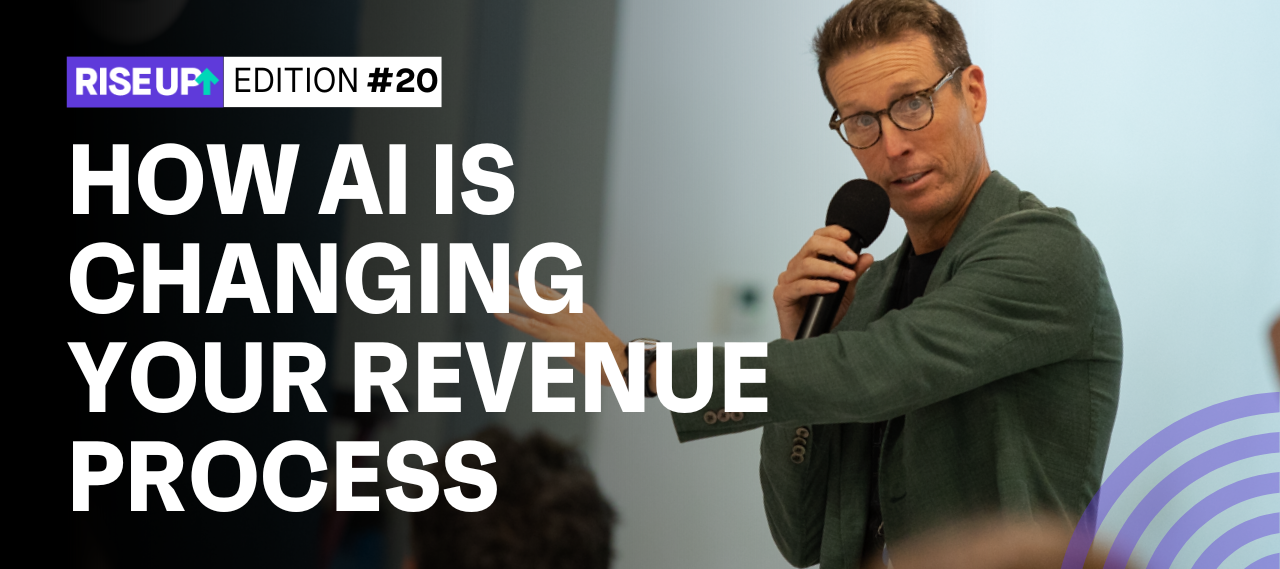AI is fundamentally rewriting what's possible in business.
It's improving enterprise processes, unlocking new business models and use cases, and helping teams tackle challenges they didn’t even know existed.
But nowhere is AI’s impact more noticeable than in revenue.
Predictive AI, Descriptive AI, Generative AI – it's all coming together at lightning speed to provide revenue teams with real-time insights and automated actions across every revenue workflow.
To help you lead the way with AI integration, let’s look at how revenue is changing today and where it’s headed from here.
Predictive AI is a forecasting powerhouse
When we launched Clari in 2012, our goal was to address a staggering pain point.
At companies, both big and small, the board of directors couldn’t answer a fundamental question. Will we meet, beat, or miss on revenue this quarter?
These boards had:
- Tons of data
- Emerging technology
- Reports from sales leadership
Why couldn’t they answer this question?
Simply put, everything was scattered. Thousands of revenue-impacting touchpoints took place every day, but there was no organized way to view it.
So companies relied on guesswork.
With Predictive AI, forecasting changed.
Using emerging AI technology – thanks to our partnership with Sequoia Capital – we could turn all this loose data into powerful predictive analytics.
Now, for the first time, board members can see trendlines, spot revenue leak, and answer their most important revenue question.
Descriptive AI tells the on-the-ground story
Revenue teams spend hours communicating daily.
Buried within their communication are powerful data and insights. But who has the time to review hundreds (or thousands) of phone calls and emails every single day?
This constraint leads to overlooked breakdowns.
- Missed handoffs between teams
- Slow parts of the revenue process
- Common customer issues
In other words, revenue leak.
And a lot of it.
With Descriptive AI, on-the-ground data is accessible.
Today’s AI uses natural language processing to analyze revenue communication. It can sort through endless call recordings, looking for common phrases. It can spot repeated keywords in email communication.
And it can surface these breakdowns so revenue teams can take action.
For companies deploying cutting-edge AI, the days of hidden revenue leak are fading. They’re being replaced by a new level of transparency throughout the organization.
Generative AI empowers revenue teams
All across the revenue cycle there’s busy work.
Writing emails from scratch, scheduling meetings and follow-ups, CRM updates, and much more. These tasks drain valuable time and effort.
What if revenue teams could spend more time on high-impact tasks?
With Generative AI, the future is superhuman.
In 2024, the next wave of AI breakthroughs are coming from Generative AI. And they’re empowering revenue teams more than ever.
They’re unlocking productivity by soaking up human-like tasks.
- Fill-in-the-blank writing
- Automated scheduling
- Data entry
With these tasks out of the way – or at least 90% complete – revenue teams have more time to do what they do best: close deals
What does AI look like within your company?
The future of revenue is AI-powered.
And as a leader in the space, you have the opportunity to redefine workflows.
Take advantage of:
- Predictive AI for its forecasting strength
- Descriptive AI for its on-the-ground insights
- Generative AI for its productivity potential
These tools will help your team create and convert more pipeline, identify and stop persistent revenue leak, and precisely predict revenue outcomes.
Till next time,
Andy Byrne
CEO, Clari




